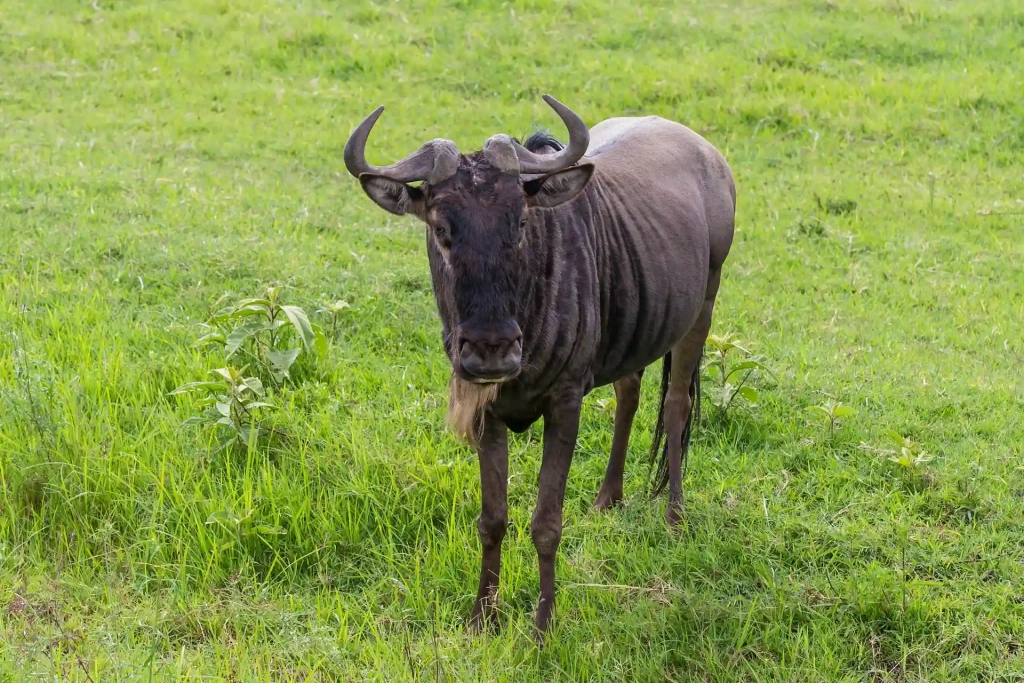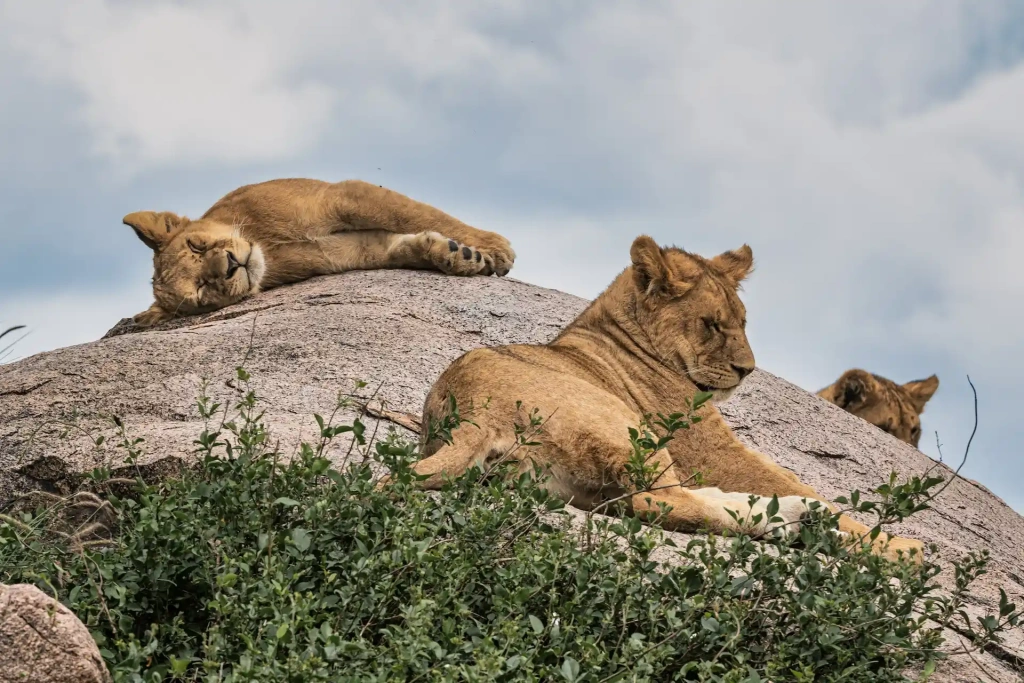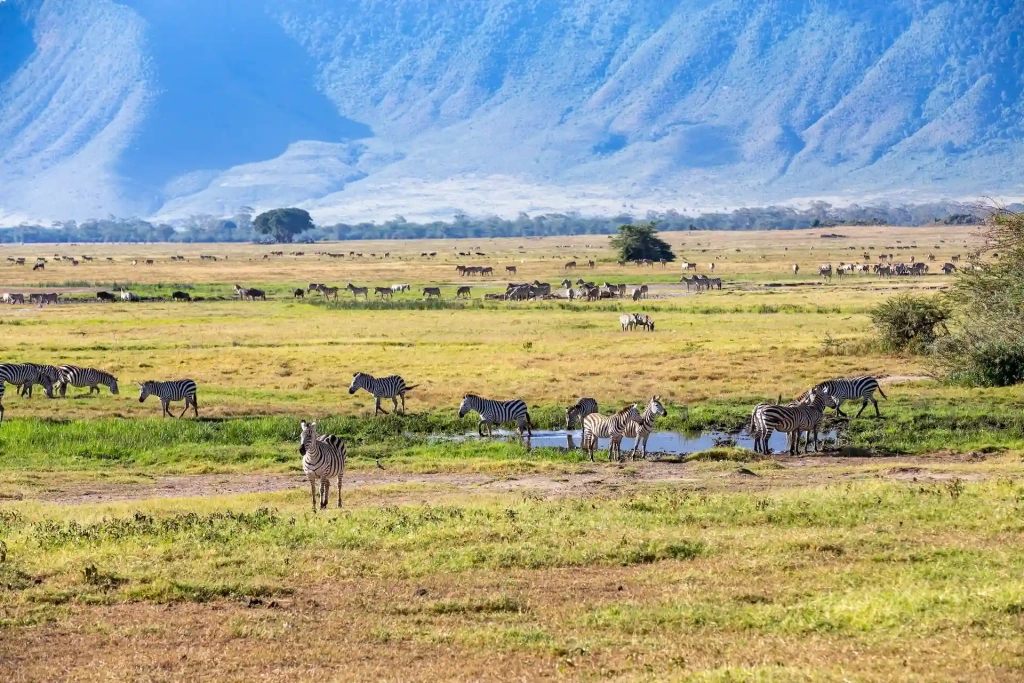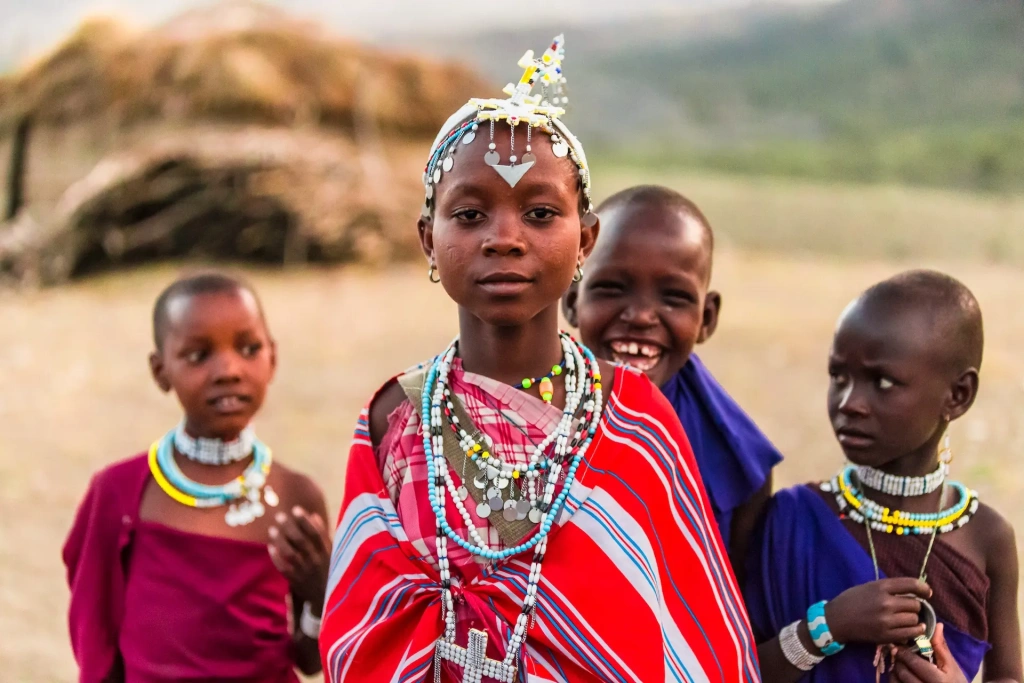When planning an African safari, visitors are often drawn to two iconic wildlife destinations: Serengeti National Park in Tanzania and Masai Mara National Reserve in Kenya.
Serengeti is renowned for its expansive savannahs and diverse wildlife, including the Big Five and the Great Wildebeest Migration. Masai Mara is famous for its large lion prides and offers great chances to see cheetahs. Like the Serengeti, it attracts visitors from around the world who come to witness the dramatic Great Migration.
In this article, Altezza Travel compares Masai Mara and Serengeti National Park, helping you choose the best destination for your African safari experience.
What are the differences between Masai Mara and Serengeti?
Location
Serengeti National Park is located on the Serengeti Plain in north-central Tanzania. It borders Kenya to the north and lies northwest of the Ngorongoro Conservation Area.
The Masai Mara National Reserve is situated in southwestern Kenya, adjacent to the Tanzania border. It is approximately 224 kilometers (140 miles) from the capital, Nairobi.
Size
The Serengeti covers an expansive 14,763 km² (5,700 sq miles), allowing visitors to fully immerse themselves in the atmosphere and take in the stunning views of the African savannah. Masai Mara is relatively smaller, covering just 1,510 km² (580 sq miles).
Mara-Serengeti ecosystem
Despite these main differences, the Masai Mara and Serengeti National Park together make up the Mara-Serengeti ecosystem, renowned as one of Africa's most biodiverse regions. The Serengeti features around 500 bird species and more than 70 species of large mammals, including the iconic African Big Five: elephants, lions, buffaloes, rhinos, and leopards. Masai Mara also boasts a diverse range of African wildlife.
Every year, hundreds of thousands of wildebeests, zebras, and gazelles form massive herds as they race across the savannah toward the lush green plains. Along the way, thousands of predators pursue them. This breathtaking phenomenon is known as the Great Migration. Travelers can witness a fierce battle for survival, highlighting the majesty of Africa's wild nature.
Where is the best place to watch the Great Migration?
To see the Great Migration between September and October, travelers usually visit Masai Mara. By November, the animals cross the border into the southeastern Serengeti. The Ngorongoro Conservation Area is located there, featuring the inhabited volcanic crater of the same name. In February and March, the migration shifts to the southern Serengeti plains, and by April, it reaches the park's central region. During this period, the rainy season in Tanzania transforms the dry land into vibrant green pastures.
By June, as the rains taper off, the wildebeests push westward, crossing the Mbalageti and Grumeti rivers. When the dry season arrives in July, they head through the northern Serengeti toward the Kenyan border, where the Great Migration reaches its dramatic peak. Enormous herds of hoofed animals make the treacherous crossing of the Mara River infamous for its powerful currents and crocodile-infested waters. This stage is both thrilling and perilous.
After crossing the river, some animals remain in the Serengeti, while others return to Masai Mara, restarting the migration cycle.
As you can see, most of the Great Migration occurs within the Serengeti National Park. Visitors can witness this incredible event in the Serengeti from November to August. In comparison, the best time to observe the migration in Masai Mara is during September and October.
Watching the Great Migration from the Mara River
One of the best spots to witness the wildebeest migration is along the Mara River, near the border between Tanzania and Kenya. In August and September, massive herds cross the river to reach the Masai Mara plains while dozens of crocodiles wait, hoping to make a meal of them.
This dramatic struggle for survival can be observed in both Masai Mara and Serengeti National Park.
Which park offers higher chances of encountering the Big Five?
The Serengeti is home to a wide variety of wildlife, from rare small rodents to giant herbivores and dangerous predators. The weather is typically clear from January to February. During this period, elephants, buffaloes, and other savannah inhabitants graze in the Serengeti plains with fresh grass. By water sources, you can also see hippos and crocodiles. The big African cats rest in the shade of acacias and during the day and venture out to hunt at night.
The ideal time for a wildlife safari in Masai Mara National Reserve is from June to October, when the animal population is at its peak. However, the reserve offers year-round opportunities for animal observation, as seasonal rainfall is less pronounced than in the southern regions. Masai Mara is especially famous for its large lion prides and is considered one of the best spots to see cheetahs.
However, the Serengeti has an additional advantage: the nearby Ngorongoro Crater, home to all large mammals. Most of these animals do not migrate, as the crater provides everything they need for a comfortable existence.
Which area has the more picturesque landscapes?
While the Serengeti National Park and the Kenyan reserve are part of the same ecosystem, their main difference lies in size. The Serengeti is considered one of the most beautiful national parks in the world. It features a much more diverse range of landscapes, including savannahs, acacia forests, rocky outcrops, green hills, and winding rivers.
The Masai Mara National Reserve is more hilly and forested than the Serengeti National Park. Although there are vast plains in the reserve's central region, they are smaller than those in the Serengeti.
What location is the best for learning about local culture and traditions?
Both the Serengeti and Masai Mara are excellent destinations for travelers looking to explore the culture and traditions of local tribes. The areas surrounding them are inhabited by the renowned Maasai tribe, which has approximately 1 million people. They maintain their ancient traditions and resist the influence of modern civilization on their way of life. Visitors can meet members of the Maasai dressed in their traditional red attire and witness their rituals, especially near the Ngorongoro Reserve.
What area is the best for birdwatching?
The Serengeti is among the world's top birdwatching locations, boasting over 500 bird species—more than elsewhere in Tanzania or Kenya. The rainy season, from November to April (with a brief dry spell from January to February), offers the best opportunity to witness local bird populations nesting and the arrival of migratory species from Europe and North Africa.
Masai Mara is also an excellent birding destination, especially from November to April. However, the Serengeti clearly outshines it in this regard.
Is Masai Mara or Serengeti more expensive?
Not long ago, the Kenyan reserve was considered more affordable, with safari prices noticeably lower. However, this has shifted beginning in 2024.
The entrance fee to Masai Mara is now standardized and no longer varies based on the location of your camp or lodge. Following a price increase, adult non-residents pay $100 during the low season and $200 during the high season. For children aged 9 to 17, the fee is $50, while children under nine can enter free of charge.
For the Serengeti safari, in 2024, the entrance fee for adult foreign tourists is $70 during the high season and $60 during the low season, with the ticket valid for 24 hours. Children under five can enter for free, while those aged 5 to 15 pay a flat fee of $20, regardless of the season.
Please note that the prices do not include Value Added Tax (VAT), which is applied at a rate of 18%. These rates apply if you're staying outside the park. While staying within the park boundaries, a concession fee must be paid for each day inside the reserve. The cost varies depending on the season and the visitor's age. You can check the official website for the most up-to-date rates and details on Serengeti safaris.
Previously, safaris in Masai Mara were cheaper due to the inexpensive lodges located near the Kenyan reserve. Now, however, the situation has reversed due to increased entrance fees and additional charges, such as for reserving camping within the park.
Additionally, while accommodation in the Serengeti tends to be pricier, budget lodging in Masai Mara also presents challenges. Most of these options are situated in the eastern part of the reserve, which gets quite crowded during the peak season. To escape the crowds, you would need to venture to a different area of the park, which often means paying higher prices for lodging and, as a result, for the overall safari experience.
How to get to the Serengeti and Masai Mara?
Both areas are accessible by air, with several airstrips making travel convenient. For instance, you can take direct flights to the Serengeti from Arusha Airport or Kilimanjaro International Airport. Charter flights can be booked for your desired day and time, with the flight duration being approximately 1 to 2 hours. Within the Serengeti, there are several airstrips: the Seronera airstrip is situated in the central region, the Grumeti airstrip is in the west, and the Kogatende and Lobo airstrips are located in the north.
You can access Masai Mara from either Nairobi Jomo Kenyatta International Airport (NBO) or Nairobi Wilson Airport (WIL). The latter is the more convenient option, offering a quick flight to the reserve for 45 to 60 minutes. Several airstrips surround Masai Mara, including Keekorok, Serena, Musiara, Mara North, and Ol Kiombo. The airstrip you choose will depend on where you are staying during your African safari.
Of course, the best option is to visit both Serengeti and Masai Mara to compare these two famous safari destinations. However, if you are short on time and want to make the most of your African safari, choose the large Serengeti National Park and include a visit to the Ngorongoro Crater in your tour. This way, you will see a greater diversity of African wildlife.
All content on Altezza Travel is created with expert insights and thorough research, in line with our Editorial Policy.
Want to know more about Tanzania adventures?
Get in touch with our team! We've explored all the top destinations across Tanzania. Our Kilimanjaro-based adventure consultants are ready to share tips and help you plan your unforgettable journey.




















